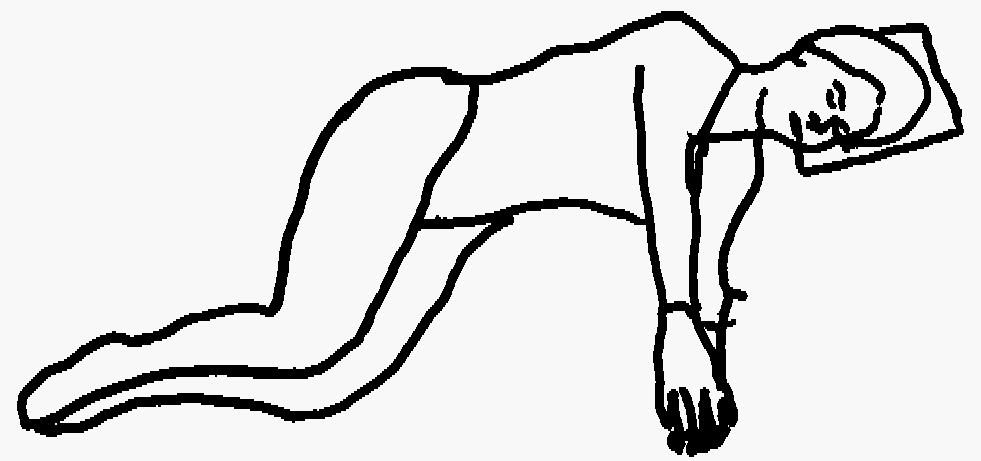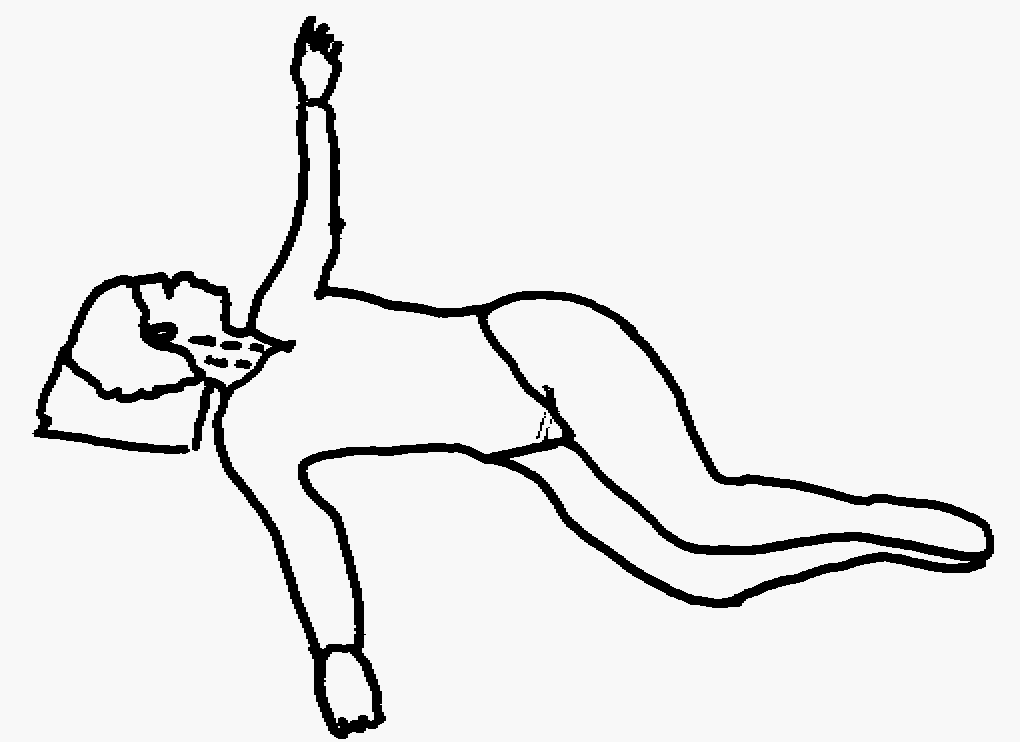|
|
|---|
Book openings:- Start Position
- Lie on your side with your head on a pillow, and knees and hips
at about 45 degrees from straight.
- Place a tennis ball between your knees, and stack each joint directly over the other,
(ankles, knees, hips and shoulders). Don't let your waist sink to the ground.
Book openings:- Action
- Breathe in and lengthen through the spine.
- Zip and hollow strongly, and breathe out.
- Apply the scapular anchor, and (breathing in), lift the upper arm up and over behind your back.
Do not force it. Follow your hand with your eyes.
Concentrate on keeping the pelvis and lower legs absoultely still.
- Breathe out as you bring the arm back around to its start position.
(Scroll right>>>>....)
|
Arm Openings:- Start Position

|
Arm Openings:- End Position

|
Comments
This exercise is the Pilates answer to the "Lower back stretch" as recommended by a major New Zealand
authority on physiotherapy (1- view it but don't use it!), and the lower back and Sacro-Iliac twist that occurs when
many yoga poses are not performed correctly(2).
What it does
- The zip and hollow helps to "clamp" the pelvic bones against the sacrum, thus protecting the
Sacro-iliac joints against the disasterous consequences of over-twisting.
- The zip and hollow also helps to tense the lumbo-sacral fascia, thus protecting
the lower spine against the likewise disasterous consequences of overtwisting.
- The spine is thereby encouraged to twist where it twists best: the
mid region between chest and abdomen(3).
© Bruce Thomson, The EasyVigour Project
|
Watch Points
- Maintain a firm zip and hollow throughout.
- Keep the rest of the spine relaxed and lengthened.
- Don't let the waist sink to the ground.
References
- (Refer: Accident Compensation Corporation
of New Zealand: "Static Stretches"
http://www.acc.org.nz/injury-prevention/safe-in-sport-and-recreation/acc-sportsmart/static-stretches/
- Judith Hanson Lasater: "Out of Joint"; The Yoga Journal:http://www.yogajournal.com/health/562_1.cfm
- Shirley A Sahrmann: Diagnosis and Treatment of Movement Impairment Syndromes Publ. Mosby 2002
scroll up^^^^.....
|